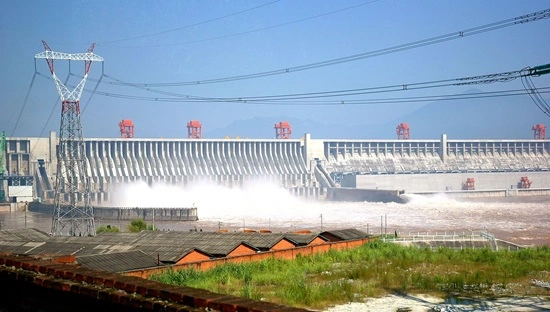Hydroelectric power, using the kinetic energy from water to power electricity is key in global energy sustainability. On the other and as the need for but goes up so well as greener options are sought, hydroelectric power becomes a key driver of environmental sustainability in the globe. Innovation has, therefore, been a constant in this sector with over 15 years of experience. The focus would be on the flexibility of the plant through turbine design, operating patterns, and digitization as it pertains to hydroelectric power. More emphasis in innovation across the sector has thus been placed on the aspect of flexibility and efficiency. Hydropower contributes in excess of other wind, solar photovoltaic, biofuel, and geothermal by 55% combined and nuclear power. This paper thus discusses the top 10 world hydroelectric power producers and their role in renewable energy. And their achievements and practices speak of how hydroelectric power helps the world come around to a lasting and cleaner energy future.
Countries With Highest Hydroelectricity Production
1. China – The Hydroelectric Power Giant:
Worldwide, China produces the most hydroelectric electricity. China gets 1,303.13 terawatts from its rivers, especially the Yangtze. A large Yangtze River hydroelectric project, the Three Gorges Dam, represents this commitment to clean energy and sustainable growth. China has deliberately used its abundant water resources to dominate hydroelectric power. Power generation relies on the Yangtze River. Chinese engineering marvel Three Gorges Dam represents its vast renewable energy commitment.
2. Brazil – The Energy Dynamo of South America:
Brazil generates second-most hydroelectric electricity globally due to its enormous water resources and ambitious hydroelectric projects. A Paraguay-Brazil partnership, Itaipu Dam produces 428.06 terawatts. This gigantic dam displays Brazil’s potential to generate electricity from its rivers, especially the Paraná. Brazil’s hydroelectric power superiority is attributable to its wise utilization of its vast water resources. The joint project Itaipu Dam with Paraguay shows the nation’s potential to use river energy for electricity. The vast project shows Brazil’s commitment to clean, efficient energy by using the Paraná River, a key energy producer.
3. Canada – Harnessing Nature’s Power:
Famous for its vast and untouched landscapes, Canada ranks third in hydroelectric power output with 392.51 terawatts. Large hydropower projects like Quebec’s James Bay Project lead this endeavor. These projects wisely employ Canada’s vast freshwater resources, showing its dedication to clean energy and environmental preservation. Technological and environmental hydropower plants dot Canada’s vast land. Canada’s enormous James Bay Project in Quebec displays its commitment to harnessing its copious water resources for energy. Canada’s energy strategy uses freshwater’s kinetic energy sustainably.
Terawatt-scale Canadian hydropower projects focus on landscape preservation. Rivers are used to create electricity throughout the country with caution for environmental sustainability. Canada’s renewable energy emphasis aids global carbon reduction and cleaner practices.
4. United States – Diverse Hydroelectric Landscape:
The US produces 248.76 terawatts of hydroelectric power, fourth worldwide. The Hoover Dam on the Colorado River and the Columbia River Basin’s massive hydroelectric dams boost the nation’s renewable energy portfolio. Hoover Dam, a Colorado River engineering marvel, epitomizes US water power history. Its beauty and utility show the nation’s technological ability to harness its rivers’ energy. To ensure hydropower diversity, the US constructs hydroelectric projects in the Columbia River Basin beyond the Hoover Dam.
5. Russia – Rivers Fueling Power:
Russia’s enormous river network produces 197.41 terawatts of hydroelectric power, sixth globally. Siberian hydroelectric projects like the Yenisei River Sayano-Shushenskaya Dam lead. These projects show Russia’s wise use of its huge water resources and commitment to renewable energy. Russia’s vast river networks, especially in Siberia, improve hydropower. Russia’s enormous Yenisei River hydropower project Sayano-Shushenskaya Dam showcases its river energy potential. The dam symbolizes architectural excellence and the nation’s commitment to sustainable energy from its plentiful water resources.
6. India – Emerging Hydroelectric Powerhouse:
India produces 174.92 terawatts of hydroelectric electricity, sixth worldwide. Indian hydropower projects like the Bhakra-Nangal Dam and Tehri Dam depend on Himalayas’ fast-flowing rivers. Bhakra-Nangal Dam in India’s Himalayan foothills is a hydroelectric milestone. The nation’s capacity to harness water’s kinetic energy is shown by this gigantic structure amid the rivers’ swift flow. A strategic position in the Himalayas, known for its robust river systems, assists India’s sustainable energy goals. Tehri Dam, another Himalayan hydroelectric project, boosts India’s hydropower domination. India’s Tehri Dam on the Ganges tributary Bhagirathi captures river energy. This diversified hydroelectric power generation method highlights India’s dedication to balancing energy needs with environmental considerations, particularly in delicate areas like the Himalayas.
7. Norway – Nordic Pioneers in Hydropower:
Famous for its fjords and waterfalls, Norway ranks sixth with 134.86 terawatts of hydroelectric power. The country’s dedication to renewable energy is seen in projects like Vøringsfossen and Alta Hydroelectric Power Station. The Vøringsfossen waterfall symbolizes Norway’s commitment to water power for energy generation. This major attraction combines nature and technology in the country’s beautiful scenery. Norway’s utilization of important monuments to promote renewable energy demonstrates its dedication to sustainability. Alta Hydroelectric Power Station boosts Norway’s hydropower. This northern Norway project boosts Norway’s renewable energy portfolio with the Alta River’s massive water resources. The station shows how the country uses its topography to generate clean, efficient hydroelectric power.
8. Vietnam – Harnessing the Mekong Delta:
Vietnam generates 95.96 terawatts of hydroelectric power, fifth worldwide. The nation’s prosperity is due to its strategic focus on Mekong Delta hydropower projects. These measures help Vietnam meet expanding energy requirements and grow economically. Complex rivers and canals make the Mekong Delta perfect for Vietnam’s hydroelectric projects. Vietnam’s hydroelectric projects here show its commitment to generating electricity from its abundant water resources. This approach supports the nation’s goal of a stable and diverse energy mix for its growing economy. Due to its energy sustainability initiatives, Vietnam ranks ninth in hydroelectric power production. Vietnam prioritizes hydropower, particularly in the Mekong Delta, for economic and environmental reasons. By using its rivers, Vietnam can lead the global green energy transition.
9. Japan – Balancing Tradition and Innovation:
With 74.88 terawatts, Japan ranks tenth in hydroelectric power output due to its history and technology. Hydroelectric energy projects like the Kurobe Dam demonstrate Japan’s ability to integrate modern engineering with environmental awareness. Japan is careful to balance heritage with innovation in hydroelectric power. The Kurobe Dam, a marvel of engineering in the Japanese Alps, symbolizes the country’s commitment to renewable energy and conservation. The famous project displays Japan’s ability to integrate cutting-edge technology with environmental care. Japanese hydroelectric power generation ranks tenth internationally, demonstrating its relevance to sustainable energy. Hydroelectric projects beyond the Kurobe Dam encompass several waterways, showing the nation’s commitment to energy diversification and sustainability. Global climate change mitigation and fossil fuel reduction are supported by Japan’s hydroelectric power policy.
10. Sweden – Nordic Commitment to Clean Energy:
The list concludes with 69.38 terawatts of Swedish hydroelectric power. Sweden’s hydroelectric projects, notably along the Lule River, promote clean, sustainable energy. Strategic Lule River development demonstrates Sweden’s hydropower push. These hydropower projects show Sweden’s energy and environmental concern. Sweden’s kinetic energy generation projects rely on the Lule River’s enormous flow. The world’s last hydroelectric power producer, Sweden, contributes to the clean energy revolution. Hydroelectric stations along the Lule River show Sweden’s unique energy generating. Sweden uses its natural water resources to boost global efforts to clean up energy.
Conclusion:
The following are the ten largest hydroelectricity producers of the world, pointing out an epitome for the relentless commitment of all to harnessing the power of water for sustainable energy. Diverse landscapes and abundant water resources of these nations partly showcase the gigantic potential which hydroelectric power contains in order to fill as much possible demand for clean and renewable energy. Even though the world is moving towards more sustainable ways of finding energy for the future, hydroelectricity still has a major role to play in cutting the carbon footprints and fighting against climate change.

Brandon is the cheif editor and writer at WorldUnfolds.com. With a passion for storytelling and a keen editorial eye, he crafts engaging content that captivates and enlightens readers worldwide.















